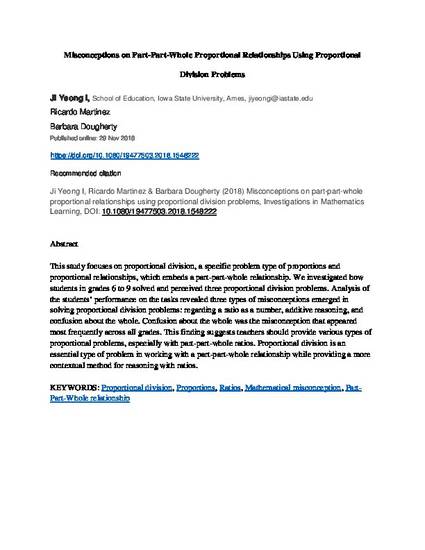
This study focuses on proportional division, a specific problem type of proportions and proportional relationships, which embeds a part-part-whole relationship. We investigated how students in grades 6 to 9 solved and perceived three proportional division problems. Analysis of the students’ performance on the tasks revealed three types of misconceptions emerged in solving proportional division problems: regarding a ratio as a number, additive reasoning, and confusion about the whole. Confusion about the whole was the misconception that appeared most frequently across all grades. This finding suggests teachers should provide various types of proportional problems, especially with part-part-whole ratios. Proportional division is an essential type of problem in working with a part-part-whole relationship while providing a more contextual method for reasoning with ratios.
Available at: http://works.bepress.com/jiyeong-i/26/

This accepted article is published as I, J., *Martinez, R. & Dougherty, B. (2018). Misconceptions on part-part-whole proportional relationships using proportional division problems. Investigations in Mathematics Learning. DOI: 10.1080/19477503.2018.1548222. Posted with permission.